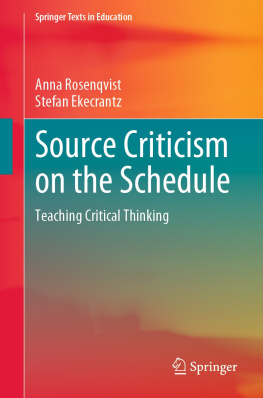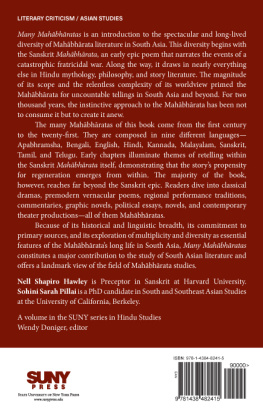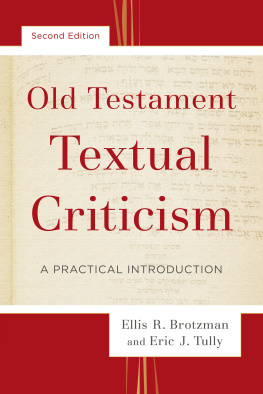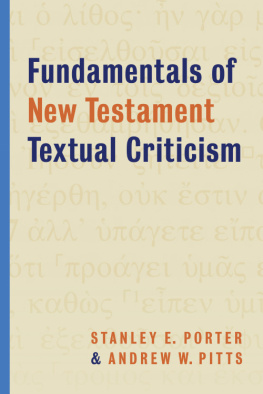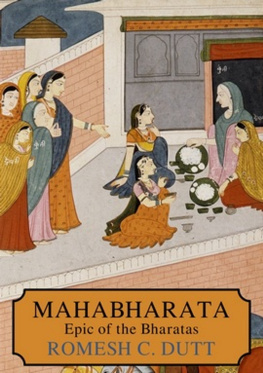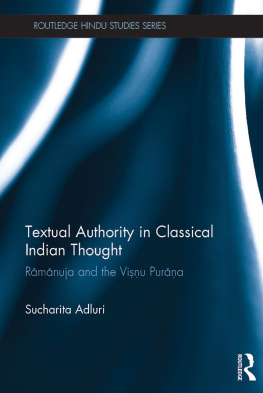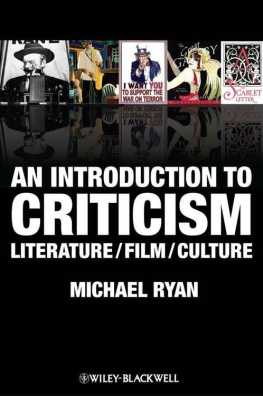Philology and Criticism
CULTURAL, HISTORICAL AND TEXTUAL STUDIES OF SOUTH ASIAN RELIGIONS
The volumes featured in the Anthem Cultural, Historical and Textual Studies of South Asian Religions series are the expression of an international community of scholars committed to the reshaping of the field of textual and historical studies of religions. The volumes in this series examine practice, ritual and other textual religious products, crossing different area studies and time frames. Featuring a vast range of interpretive perspectives, this innovative series aims to enhance the way we look at religious traditions.
Series Editor
Federico Squarcini, University of Florence, Italy
Editorial Board
Piero Capelli, Ca Foscari University of Venice, Italy
Vincent Eltschinger, ICIHA, Austrian Academy of Sciences, Austria
Christoph Emmrich, University of Toronto, Canada
James Fitzgerald, Brown University, USA
Jonardon Ganeri, University of Sussex, UK
Barbara A. Holdrege, University of California, Santa Barbara, USA
Sheldon Pollock, Columbia University, USA
Karin Preisendanz, University of Vienna, Austria
Alessandro Saggioro, Sapienza University of Rome, Italy
Cristina Scherrer-Schaub, University of Lausanne and EPHE, France
Romila Thapar, Jawaharlal Nehru University, India
Ananya Vajpeyi, University of Massachusetts, Boston, USA
Marco Ventura, University of Siena, Italy
Vincenzo Vergiani, University of Cambridge, UK
Philology and Criticism
A Guide to Mahbhrata Textual Criticism
Vishwa Adluri and Joydeep Bagchee

Anthem Press
An imprint of Wimbledon Publishing Company
www.anthempress.com
This edition first published in UK and USA 2018
by ANTHEM PRESS
7576 Blackfriars Road, London SE1 8HA, UK
or PO Box 9779, London SW19 7ZG, UK
and
244 Madison Ave #116, New York, NY 10016, USA
Copyright Vishwa Adluri and Joydeep Bagchee 2018
The author asserts the moral right to be identified as the author of this work.
All rights reserved. Without limiting the rights under copyright reserved above,
no part of this publication may be reproduced, stored or introduced into
a retrieval system, or transmitted, in any form or by any means
(electronic, mechanical, photocopying, recording or otherwise),
without the prior written permission of both the copyright
owner and the above publisher of this book.
British Library Cataloguing-in-Publication Data
A catalogue record for this book is available from the British Library.
ISBN-13: 978-1-78308-576-7 (Hbk)
ISBN-10: 1-78308-576-2 (Hbk)
This title is also available as an e-book.
nryaa namasktya nara caiva narottamam |
dev sarasvat caiva tato jayamudrayet ||
Dedicated to
Vishnu Sitaram Sukthankar
Philology [] has become the modern form of criticism.
Michel Foucault, The Order of Things
CONTENTS
Figures
Tables
Philology and Criticism is the first book of its kind. Incisive in its analysis, this book undertakes a rigorous defense of the Mahbhrata critical edition. Following a prologue and an introduction, this book is divided into three chapters. Each chapter states a problem and discusses key concepts and principles in textual criticism pertaining to it. Thereafter, the authors guide the reader through a history of responses to the problem. Each response is posed as an argument (via citing the critic who raised it). The authors address each argument individually in a separate section. In each section, they consider whether the argument can be defended from some perspective. Once they establish that the argument is untenable, they state their conclusion. In this way, they systematically work through contemporary criticisms of the critical edition, focusing primarily on Andreas Biggers and Reinhold Grnendahls work.
The first chapter addresses the view that the constituted text of the critical edition reconstructs merely a late stage of the transmission. Although several scholars advocate this thesis (James L. Fitzgerald, for instance, thinks the critical edition reconstructs a Gupta-era archetype, which he elsewhere calls a written Sanskrit text of the epic), the authors focus on the thesiss author: Andreas Bigger. Bigger holds that the critical edition merely reconstructs a text he calls the normative redaction of the Mahbhrata, supposedly the result of a uniform redaction of the epic undertaken during its first transcription from a fluid oral tradition. Adluri and Bagchee demonstrate the circularity of this claim.
The second chapter addresses the underlying assumption of Biggers work, though it also broadens the scope to include other Mahbhrata critics. The authors show that Biggers thesis appears plausible only because scholars assume an oral epic preceded the written Sanskrit Mahbhrata. The authors demonstrate that their arguments are not stemmatic and hence do not hold. The chapter concludes with a discussion of the so-called analytic approach to the epic. The authors argue that this approach is premised on an uncritical view of Indian history, whose origins they outlined in their book The Nay Science: A History of German Indology.
The third chapter, the longest in this book, addresses a perplexing problem: How were the Mahbhrata manuscripts classified? Were they classified by script as Grnendahl argues? The authors convincingly demonstrate that they were not. As they show, script cannot play a role in classification for it is an external marker. This chapter also addresses Grnendahls claim that extensive contamination makes a critical edition of the Mahbhrata unachievable as well as his claim that focusing on a regional recension would have led to a better edition. The conclusion provides a summation not only of this book but also of the authors first book. It presents a serious challenge to contemporary Sanskrit philology inasmuch as it relies on opinion rather than argument.
While I disagree with the authors in some respects (most notably on the southern recensions place in the Mahbhrata tradition), Philology and Criticism will stimulate debate. It poses a major challenge to scholars who have made unguarded statements about the Mahbhratas origins in an oral tradition. As I have argued since 2001 (Rethinking the Mahbhrata: A Readers Guide to the Education of the Dharma King), the notion of an oral epic is a myth. The Mahbhrata is clearly a written text. In all likelihood, a small group of Brahmans created it. T. P. Mahadevan identifies these Brahmans with the historical Prvaikha Brahmans. In spite of the texts expansion and changes, no evidence exists that it was ever transmitted orally. Philology and Criticism conclusively vindicates this view. As I demonstrated in my review of Fitzgeralds translation of Books 11 and 12 of the Mahbhrata (in the Journal of the American Oriental Society), those who resurrect the oral hypothesis do so for ideological reasons rather than because persuasive historical evidence exists. Relying on nineteenth-century views of the epic (whose assumptions Adluri and Bagchee criticized in their first book), they overlook the fact that the archetype presupposes a written transmission. Adluri and Bagchee have staked their position, and scholars in the future will have to account for their view in some way.
I hardly need add that Philology and Criticism


